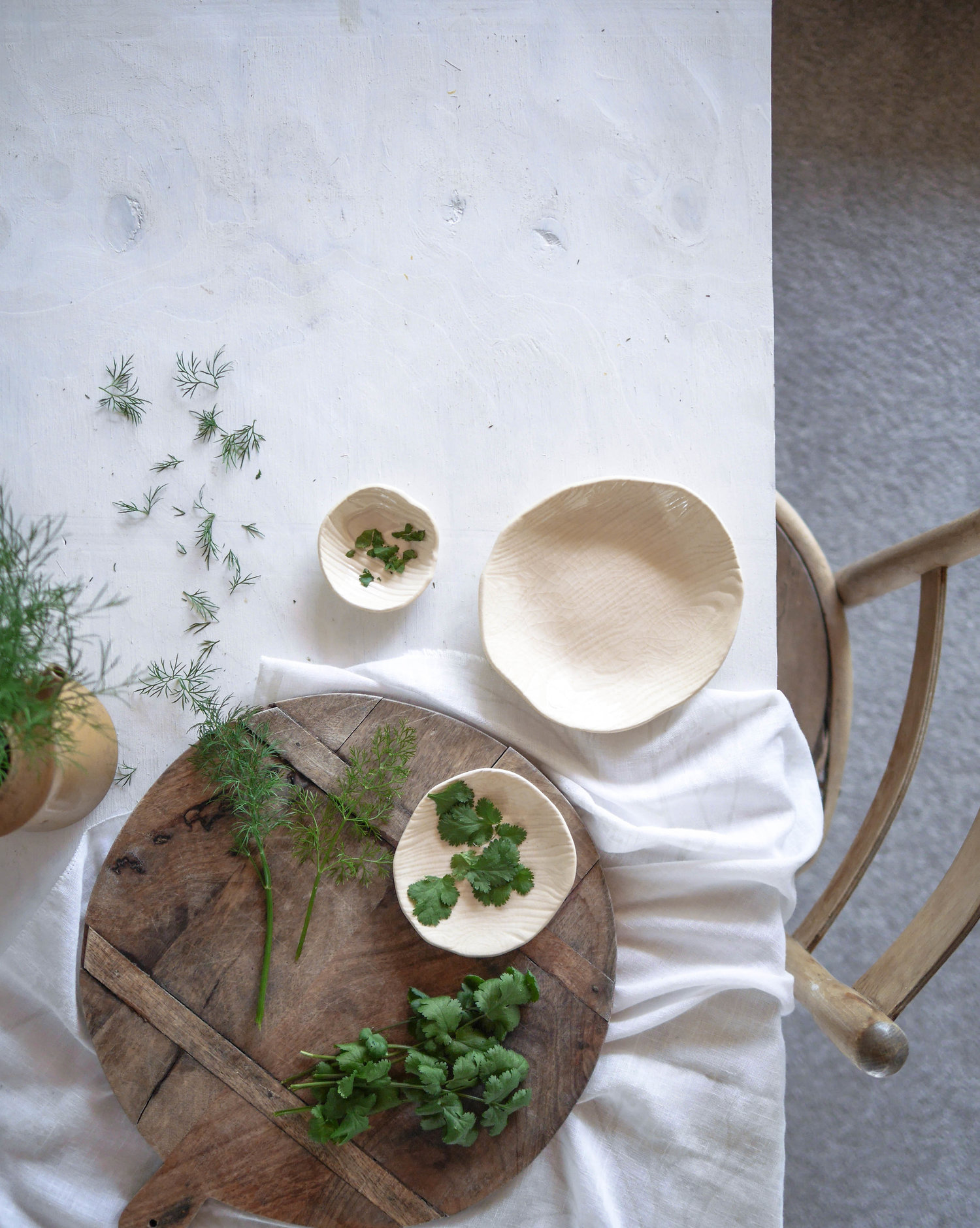The Wabi-Sabi way: How to embrace the art of the perfectly imperfect

The term Wabi-Sabi is something you may have heard in recent times around the Instagram circuit, especially amongst those seeking to embrace a more simple, authentic and calm way of life, but its origins date back to 15th Century Japan.
Wabi-Sabi is a Japanese aesthetic borne out of a reaction to the lavishness and extravagance of the time, and embraces and celebrates the beauty in imperfection, impermanence, asymmetry, incompleteness and simplicity, with an appreciation for nature and its processes.


There is no exact translation for term Wabi-Sabi, and doing so is impossible because Wabi-Sabi is more than just an ideal - it's a deeply ingrained concept in Japanese culture that encapsulates their entire world view. But loosely translated, "Wabi" can mean rustic simplicity, and quietness, and "Sabi" the beauty of age and wear- the patina, rust and spots that can't be mimicked except through age.

Wabi-Sabi is thrift shops, your Grandmother's cupboard, the well used baking tray. It's the falling leaves in autumn, the composting leaves in winter, the blossoms falling gracefully like snow in spring, and the lush green canopy in summer. It's the handmade, hand sculpted, hand-turned items with marks and asymmetry that can only be accomplished with human hands. It's the smell of old leather, the cracks and the crevices in concrete, the weathered outdoor bench seat, the sun faded paper and the time worn linen. It's the half finished painting in your studio, or the vase of withering flowers on your table - which have taken on a new aesthetic in their current state. It acknowledges that everything is in a state of flux, and that everything will change over time.
[#cta]
How to embrace Wabi-Sabi ideals in your own home and styling
You may already do so without even being aware of it, which in itself is a beautiful notion to the natural processes of imperfection. Simply by looking at your surroundings differently can cause you to have a different take on things. My husband sees an old rusty fence covered in jasmine which he thinks needs to be ripped down (heaven forbid!). I see a beautiful piece of history with nature doing its thing to fill the cracks and joints - and to hold the fence up of course.

Take your cues from nature
Look at the shapes and shadows cast by nature. Look closely at the detail in trees, in the ground. Take a step back and look at the big picture, and notice how some branches hang gracefully, and others reach for the sky. Take photos. Notice the lichen appearing on branches, or the ivy starting to creep around the base of a tree. Pick up a branch that has fallen on the ground, or a piece of driftwood at the beach, and appreciate its natural form. Keep a bunch of flowers until after they are past their use by date, and see what happens - do get rid of the old water though! Press some flowers between the pages of a book. Grow a little herb and vege garden.


Bring nature in
Into your home, into your styling. You can incorporate branches, twigs, leaves, flowers, stones into your home without it resembling a birds nest. A simple flower or large leaf stem in a bottle, or a handful of wiggly sticks in an old ceramic jug is austere beauty - because sometimes, well most times with Wabi-Sabi, less is indeed more.


Look around your home for interesting textures
It's amazing what you'll see if you just look closely. Look up, look down, look under. A concrete block wall outside can become the perfect backdrop for a simple styled shot. Those cracks in the carport floor, or even your back door step can add an incredible amount of interest in a photo. Yes - I've used both places for photography. Weather worn decking, a concrete path with its various textures, weatherboard exterior, an oak bedside table, a wooden coffee table, or even a fireplace hearth - when you take it out of context and zoom in on the little square needed for your photo, it changes the look completely.


Gather time worn objects
You don't need to be a collector or have a home that resembles a museum. The important thing about Wabi-Sabi objects is that they are relevant to you - you're drawn to them because you appreciate the makers marks or the time worn patina. Each object has a story. Thrift shops, garage sales, and recycling yards are treasure troves for objects with rustic simplicity and understated elegance. They're also great places to fossick for items that could be potential backdrops - rusty old BBQ lids, planks of old timber, old table cloths and other linen, blackened oven trays, old cupboard doors....just remember to look at these things with different eyes to visualise how they can be used in a photographic context.


Pare it back
Understated elegance and simplicity are the key words here. When it comes to styling, sometimes it's more about taking away, than adding more to. Keeping it simple enhances the authenticity and quietness of the the setting, and allows the rustic qualities of each element to shine through. Paring back evokes a sense of desolation and solitude - both of which are qualities of the Wabi-Sabi ideal. An appreciation of muted beauty and serenity is acknowledged when things are simplified. Oh to apply these concepts to everyday life would be life changing!


I think Richard Powell, author of Wabi Sabi Simple, summed up the Wabi-Sabi philosophy in the most appropriate way:
"Wabi-Sabi nurtures all that is authentic by acknowledging three simple realities: nothing lasts, nothing is finished, and nothing is perfect"
Perfectly imperfect.









%20(1).png)
%20(1).png)






